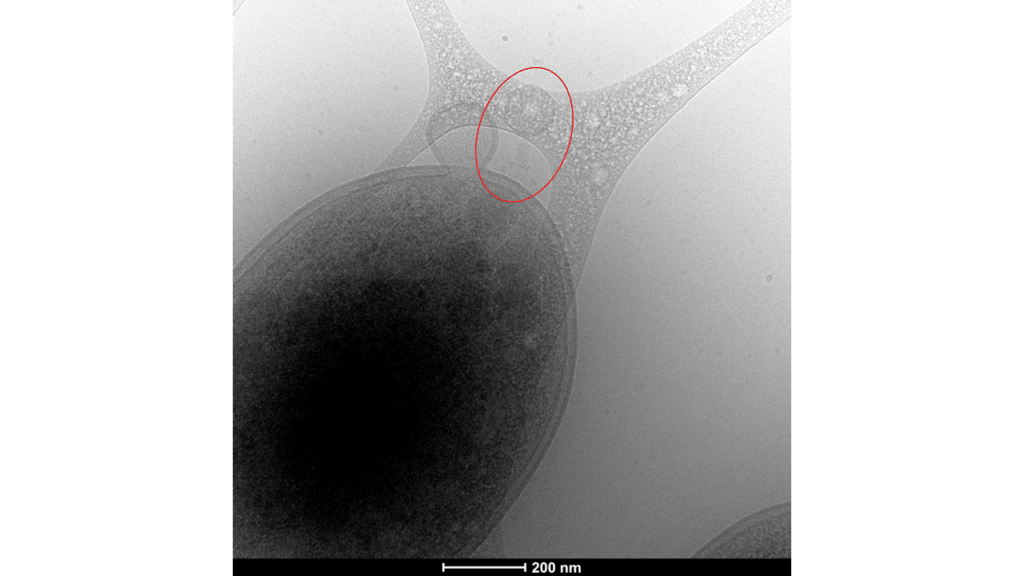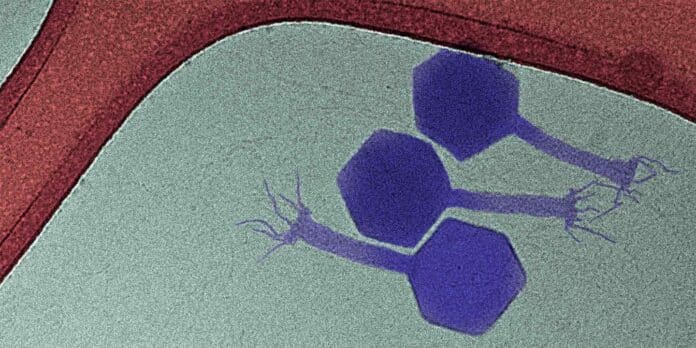Bacteria usually survive with minimal resources. When stressed or lacking nutrients, they enter a rest state, slowing down metabolism and halting growth. This dormant phase shields them from antibiotics and viruses. Researchers at ETH Zurich discovered unique viruses, called phages, that can infect dormant bacteria, challenging the belief that phages only target actively growing bacteria.
This finding opens new possibilities for using phages as an alternative to antibiotics, especially when dealing with dormant or drug-resistant bacteria. The study was published in Nature Communications.
ETH Professor Alexander Harms and his team aimed to find phages attacking dormant bacteria in a year. However, it took until 2019 for student Enea Maffei to discover Paride, a unique virus found in decaying plant material near Riehen. Paride is the first phage known to attack bacteria in a dormant state, challenging previous assumptions. The research, conducted at the Biozentrum of the University of Basel, highlights the surprises in exploring the vast world of bacteriophages.
The newly discovered virus targets Pseudomonas aeruginosa, a bacterium commonly found in various environments, including the human body. Some strains of this bacterium can cause severe respiratory diseases like pneumonia.
The researchers suspect the virus uses a specific molecular key to wake up dormant P. aeruginosa germs and then hijacks the cell’s multiplication machinery for reproduction. Although the exact process is unclear, the researchers aim to identify the genes or molecules involved. Once understood, they could develop substances to trigger the awakening process, potentially combined with antibiotics for complete bacteria elimination.

Harms said, “But we’re just at the beginning. The one thing we know for sure is that we know almost nothing.”
To test Paride’s effectiveness, researchers combined it with the antibiotic meropenem, disrupting cell wall synthesis without harming the phages. The antibiotic alone did not affect dormant bacteria, but when mixed with Paride, it eradicated the bacterial culture. In experiments on mice with chronic infection, the combination of Paride and meropenem proved highly effective, surpassing the phage’s or antibiotic’s individual impact. This suggests a promising synergy between phages and antibiotics in treating bacterial infections.
Maffei said, “This shows that our discovery is not just a laboratory artifact but could also be clinically relevant.”
Researchers are exploring phage therapy as a potential replacement for antibiotics. While some studies show promising results, comprehensive research needs to be improved, and current knowledge mostly comes from individual case studies. Studies at the Queen Astrid Military Hospital in Brussels revealed improvement in 75% of patients, with bacteria elimination in 61%. However, challenges remain, as phages may not effectively penetrate dormant bacteria, especially chronic infections. This leaves room for improvement in treating non-resistant strains.
Harms explains, “In the case of infections, it would be important to know the physiological state of the bacteria in question. Then, the right phages, combined with antibiotics, could be used in a targeted manner. However, you need to know exactly how a phage attacks a bacterium before you can select the right phages for a particular treatment. This hasn’t happened yet because we know too little about the phages.”
In conclusion, the study on the novel Paride reveals its unique capability to target dormant bacteria, presenting a potential breakthrough in phage therapy. The successful combination of Paride with the antibiotic meropenem demonstrates promising results in eradicating bacterial cultures.
This discovery underscores the importance of further research in phage therapy, offering new perspectives on treating bacterial infections, especially those involving dormant bacteria. As we unlock the full potential of phage-based treatments, there is optimism for enhanced efficacy and broader applications.
Journal reference:
- Maffei, E., Woischnig, AK., Burkolter, M.R. et al. Phage Paride can kill dormant, antibiotic-tolerant cells of Pseudomonas aeruginosa by direct lytic replication. Nature Communications. DOI: 10.1038/s41467-023-44157-3.
